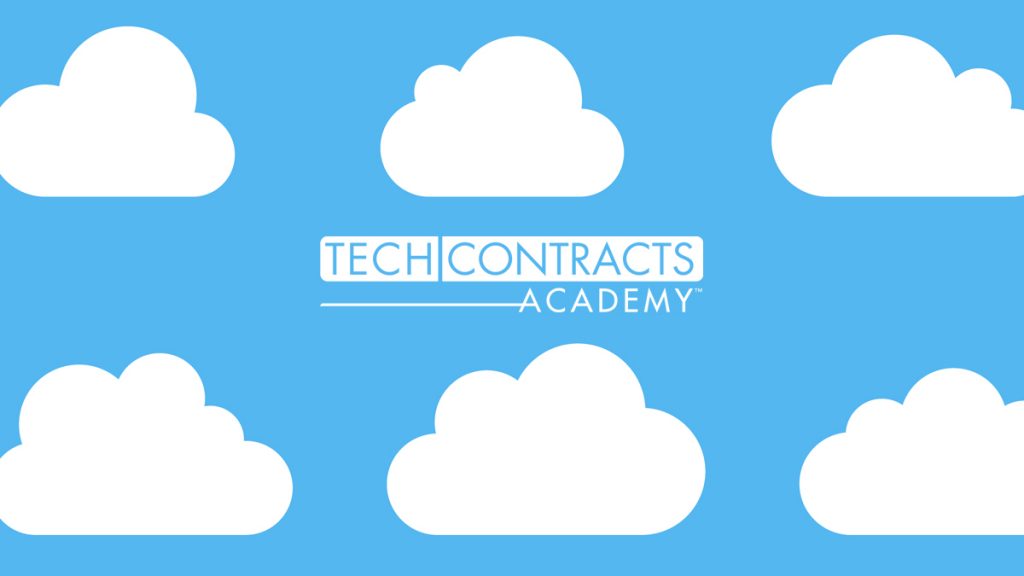
There is no universally accepted industry standard that defines key terms like “cloud computing,” “software-as-a-service,” “platform-as-as-service,” or “infrastructure-as-a-service.” Experts disagree on these terms’ definitions, and that points to the need to define common terms within contracts. Here are definitions used in The Tech Contracts Handbook, which provide a good starting point for most purposes.
“Cloud computing” is a model for delivering software and other IT resources through a particular type of computer network. The software sits on one or more central computers—servers—and the customer’s users access it remotely, from their computers (often desktops and other client computers). Usually, access is via the Internet. The customer might host the server computers and software itself, but often the vendor (or its reseller) hosts. (There’s actually more to the cloud computing architecture, but that’s a good thumb-nail definition.)
Where the vendor hosts the server computers and software, many IT professionals call the arrangement “cloud services” (or sometimes “hosting services” or “cloud computing services”). Cloud services don’t involve a software license, since the vendor keeps the software to itself and doesn’t give the customer any on-premise copies. What the vendor really provides is a service: remote access to and use of its server computers and the software. On the other hand, if the customer hosts the software, it does need a license, since it has to make copies of the software and run them as on-premise software. So an agreement letting the customer host is a software license agreement.
You’ve probably heard a lot about a particular type of cloud services: “software-as-a-service” (SaaS). SaaS refers to a cloud service where the remotely hosted IT resource is a software application, or several applications. An application is software for users, like a word processing or contact management program—something a human being actually sits down and uses. So in a SaaS relationship, the vendor puts a software application on its server computers and makes it available to the customer, usually via the Internet.
There are two other types of cloud services IT professionals discuss: In a “platform-as-a-service” (PaaS) offering, the vendor hosts a software platform: software that applications run on top of, like an operating system. The customer installs or creates applications on that platform and uses them. And in “infrastructure-as-a-service” (IaaS), the vendor hosts server computers and other hardware infrastructure. (Very often, those server computers generate a “virtual computer” for the customer’s use. That gets complex, but for our purposes here, let’s just think of it as a regular computer.) The customer installs both platform and application software on that infrastructure, and uses them.
The definitions above can help you understand your contracts, but you can probably find an IT expert to quibble with any one of them. That’s all the more reason to define your terms. If you use concepts like SaaS, PaaS, and IaaS in your contracts—or any industry terms–add definitions to ensure that all parties work off the same page.
Fore more on this topic, see “Cloud Services are Neither Products nor Services.”
Excerpted from The Tech Contracts Handbook, by David W. Tollen.
©2015 by the American Bar Association. Reprinted with permission. All rights reserved. This information or portion thereof may not be copied or disseminated in any form or by any means or stored in an electronic database or retrieval system without the express written consent of the American Bar Association.
